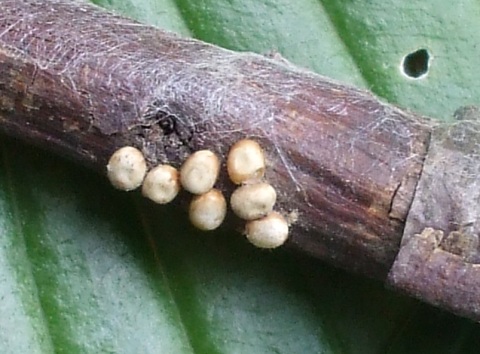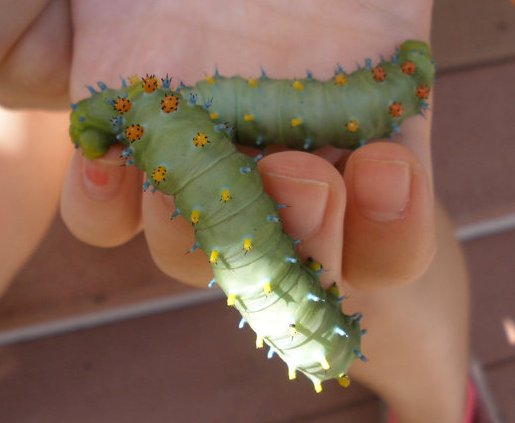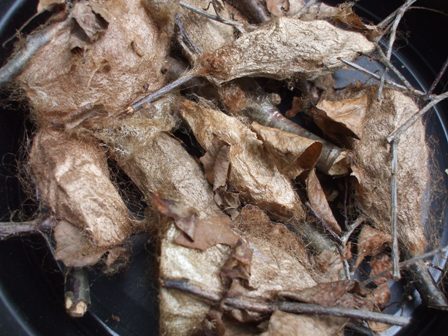Autumn leaf piles mean different things to different people. If you’re a child, leaf piles invite jumping and hiding and all sorts of fun. To many adults, all of those autumn leaves must be raked, blown, piled, chopped, dragged, or somehow transported to another place, anywhere that is not our lawn.
But if you’re a nature lover, a pile of dead leaves is teeming with life! For many creatures, leaf piles are places to hibernate, hide, hunt, scavenge, and survive. Look what I found last year while digging through leaves:
Giant Leopard Moth Caterpillar
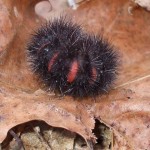 This gorgeous caterpillar curls up in a ball when disturbed, revealing bright red bands in between black bands of bristles. It hibernates in the same curled-up position under leaves, loose bark, and logs. Next summer, it will transform into a white moth with black spots, somewhat resembling a Dalmatian puppy.
This gorgeous caterpillar curls up in a ball when disturbed, revealing bright red bands in between black bands of bristles. It hibernates in the same curled-up position under leaves, loose bark, and logs. Next summer, it will transform into a white moth with black spots, somewhat resembling a Dalmatian puppy.
A Woolly Bear Caterpillar
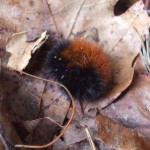 We frequently see this orange- and black-bristled caterpillar crossing roads in autumn to find a hibernation spot. The woolly bear hibernates under leaf piles, logs, and rocks and will emerge in the spring to feed again before transforming into the brownish, less vibrant Isabella Tiger Moth.
We frequently see this orange- and black-bristled caterpillar crossing roads in autumn to find a hibernation spot. The woolly bear hibernates under leaf piles, logs, and rocks and will emerge in the spring to feed again before transforming into the brownish, less vibrant Isabella Tiger Moth.
Sowbugs and other decomposers
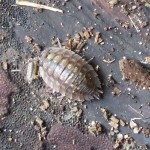 Sowbugs, which are crustaceans rather than insects, have 12 legs and 7 armored plates, reminiscent of ancient creatures. Sowbugs hide in damp places, like piles of leaves, and feed on decaying organic matter. Given enough time, sowbugs will eventually convert your leaf pile back into soil.
Sowbugs, which are crustaceans rather than insects, have 12 legs and 7 armored plates, reminiscent of ancient creatures. Sowbugs hide in damp places, like piles of leaves, and feed on decaying organic matter. Given enough time, sowbugs will eventually convert your leaf pile back into soil.
What can we do to protect these fascinating creatures?
Here are some steps to encourage creatures like those pictured above. You may not find all the ideas practical, desirable, or applicable to your situation and that’s fine. Use what works for you.
- Rake as few leaves as possible. In my yard, I only rake a central grassy area, leaving leaf litter in the flower beds and yard edges. Sure, it’s not as attractive as mulch, but it works to keep down weeds and it provides habitat for cool creatures.
- Be gentle. If I find a hibernating creature while I’m raking, I move it to a protected spot in a leafy area of my flower beds. For any creatures I’ve missed, I gently rake leaves onto a sheet and deposit them in a nearby wooded area, hoping they’ll emerge in the spring unharmed.
- Create a “pile of life.” When my children were younger, we created a huge pile of leaves each fall that we let sit year round. Every few days we would check the pile to observe all the natural drama. We found sowbugs, worms, fungal strands, and millipedes. One time we even chanced upon a ring-necked snake chasing a toad. Consider creating your own “pile of life.”
By Kristin Steinmetz, teacher naturalist at Broad Meadow Brook Wildlife Sanctuary in Worcester.


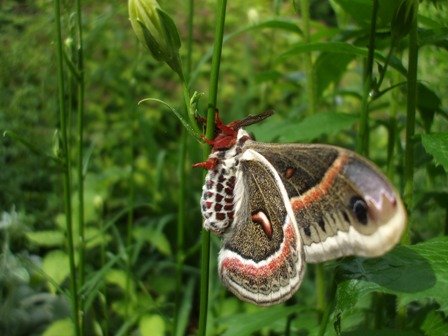 If you’re under the impression that moths are dull creatures who eat holes in sweaters, you haven’t encountered a giant silk moth.
If you’re under the impression that moths are dull creatures who eat holes in sweaters, you haven’t encountered a giant silk moth. 